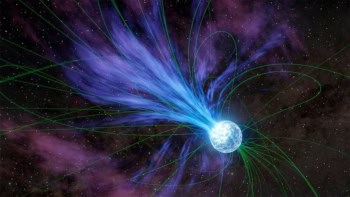Results from seismic stations surrounding India and Pakistan have raised a number of scientific questions related to monitoring the Comprehensive Test Ban Treaty (CTBT). According to the US Geological Survey, only one nuclear explosion registered in India on the 11 May, and none on the 13 May. Meanwhile, in the UK, the future of Britain's main expertise in seismic monitoring appears to be under threat, while CERN, the European particle physics laboratory, has dropped discussions on India's observer status.
Under the CTBT, a network of seismic stations around the world is being set up to monitor the treaty and automatically send information to an International Data Centre (IDC) in Vienna, Austria. A prototype centre in Virginia (PIDC) currently receives information from existing stations. So far only 64% of the primary seismic stations, and 27% of the secondary stations are active and none of the stations send their data in real time to Virginia. Recent analysis of PIDC data by the US Geological Survey pinpointed India’s nuclear tests to within 12 km of its location. The analysis also suggested that the explosion was between 30-60 kilotons – consistent with the 43 kiloton yield claimed by the Indian government. However the signals suggest a single smooth spike, not a multiple explosion as claimed by the Indian officials. Experts believe that multiple explosions would only show a subtle variation in the signal and hence be hard to detect. Furthermore the sub-kiloton explosions from 13 May were apparently detonated in a sand dune which ‘muffled’ the already weak seismic signals produced by the explosion. This disparity between the results from the PIDC and the yields claimed by the Indian Government are increasing calls for a seismic monitoring station in India. So far the closest monitoring station is 2800 Km away in Tibet. Some analysts believe that it is unfair to consider the Pakistan and India tests as a failure of the CTBT as other countries testing nuclear weapons would detonate much larger explosions. “Both countries have decades of nuclear experience, ” says one CTBT observer “and a non-nuclear state would not have the capability to detonate a similar [kiloton] yield”. Trevor Findlay, executive director of VERTIC – a verification information centre based in the UK – believes the biggest failure came from the national governments own attempts to police the treaty, particularly the US. “It was a major disappointment” he says. Meanwhile, the UK government is concerned about the long term feasibility of Blacknest – the forensic seismology facility at the Aldermaston defence laboratory in Berkshire. In the next four years most of the expertise at the unit will retire and over forty years worth of experience will be lost. An official from the Ministry of Defence confirmed that the government is looking to outsource all its expertise in seismology. During the CTBT negotiations Blacknest provided independent scientific advice to the treaty negotiators on what sort of monitoring regime should be instigated. Indeed, some observers say they stopped the treaty from falling apart. However, the UK government awarded the task of monitoring the CTBT to the British Geological Survey in Edinburgh, under a competitive tendering agreement. It is expected that the remaining staff at Blacknest – along with their archive record – will be moved to Edinburgh. Across at CERN all discussions on granting India observer status on the Large Hadron Collider in wake of the country’s nuclear tests has been stopped. According to the Swiss newspaper, Le Temps, CERN’s governing council was due to discuss India’s observer status at a meeting on 19 June. However, after the nuclear tests carried out on May 11, the topic was deleted from the agenda. A CERN spokesman confirmed that member states have been discussing India’s observer status, and that the issue is not on the agenda of any current meetings.



